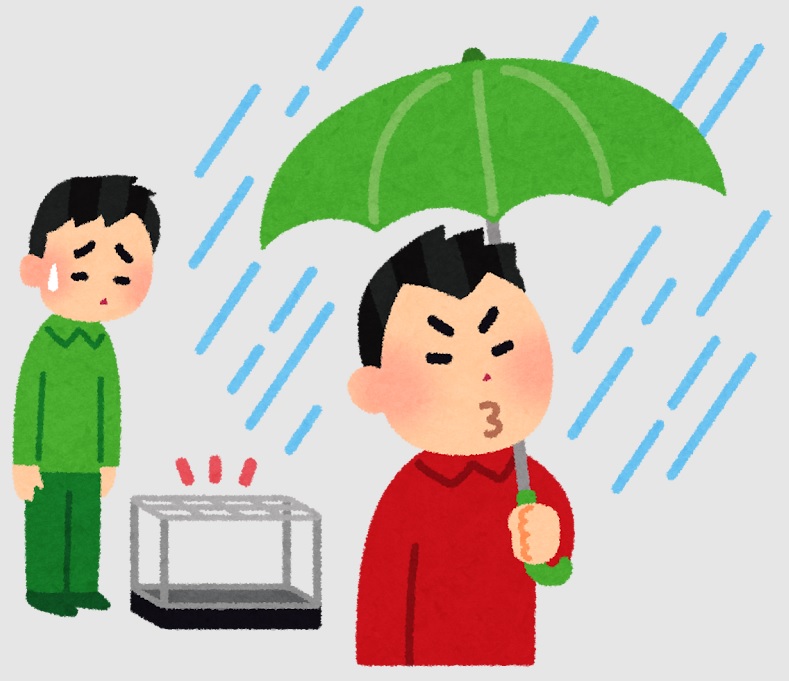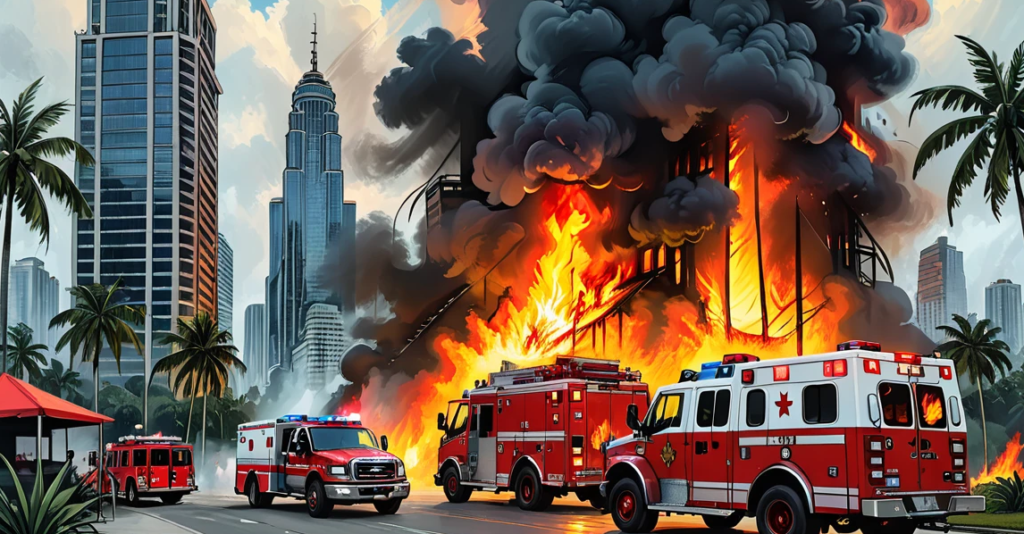管理人オススメコンテンツはこちら
「最適解の1つ|幅と確率で選ぶ!最適なリスク対策術」
〜前回のつづき〜
●隕石は怖くない。でも旦那の急死は現実だ~見逃すな“低確率×超ダメージ”の落とし穴~

『幅』と『確率』に対して
コストパフォーマンスの高い対策を取る
という事が大切なんですね。
『幅』と『確率』の実例を紹介しますと
例(1)

・雨に濡れるかもしれない
・傘をなくすかもしれない
という『幅』と『確率』に対して
2本傘を持ち歩くというのは
『幅』と『確率』に対しての
コストパフォーマンスが
悪いですよね?
傘が
・壊れちゃうかもしれないから
・なくしちゃうかもしれないから
2本持ち歩こうとか
これって
『幅』と『確率』に対しての
コストパフォーマンスが悪いですよね?
確かに2本とも
なくしてしまうとか
1本なくしてしまうとか
壊れてしまうとか
可能性としては有るけど
『幅』と『確率』に対しての
コストパフォーマンスが悪いですよね?
これは誰もが思いますよね?

って思うじゃないですか。

「外を歩いていたら
隕石に当たるかもしれないから
絶対に家から出ないぞ!」
なんて人はいません。
『幅』と『確率』に対しての
コストパフォーマンスが
これも悪い訳ですよ。
『確率』がほとんど無いですよね?
隕石に本当に当たってしまったら
死んでしまうかもしれないですけど。
でもこれは『確率』が低いし
家から出ないというのは
コストパフォーマンスが悪いですよね?
例(2)

専業主婦の場合
旦那さんが亡くなってしまうと
人生が詰んでしまいますよね?
可能性は低いけど
誰にでも起こり得るという事です。
『確率』は低いけど
『幅』は大きいという事です。
それに対しての
コストパフォーマンスがいい対策は
どうするかというと
掛け捨ての生命保険というのは

最適解の1つですよね?
対策としてこれが
必ず万全かどうかは
わかりませんが
死なないというのが
1番いいんですけど
もしも
起こってしまった場合の
対策として
人生が詰んでしまわないように
という対策としては
いいですよね?
・自動車保険

・火災保険

これも同じです。
〜〜〜つづく〜〜〜
Special Thanks college president Ryo.

●おまけ
≪≪perplexityちゃんによる文章まとめ≫≫
日常生活では、リスクの「幅(被害の大きさ)」と「確率(起こる可能性)」を考え、コストパフォーマンスの良い対策を取ることが重要です。
例えば、傘を2本持ち歩く、隕石が落ちてくることを恐れて外出しないなど、確率が極めて低い事象に過剰な備えをするのは非効率です。
しかし、確率は低くても、万が一発生した場合に人生に大きな影響を及ぼすリスク、例えば一家の大黒柱の急死などには、生命保険のような合理的な備えが必要です。
同様に、自動車保険や火災保険も、発生確率は低くても被害が甚大な事態に備えるための有効な手段です。
このように、リスクの大きさと発生確率を見極め、適切なコストで備えることが、安心して暮らすためのポイントです。
[1] https://www.murc.jp/library/report/cr_220607/
[2] https://100years-company.jp/column/article-960115/
[3] https://note.com/valueqa/n/n62761f9efc70
[4] https://gentosha-go.com/articles/-/43014
[5] https://money-sense.net/1126
≪≪Chat-GPTくんによる英訳≫≫
~Continuing from the previous discussion~
【A meteor isn’t scary. But your husband’s sudden death? That’s real.~Don’t overlook the trap of “low probability × massive damage~】
When making preparations for potential risks,
it’s important to choose cost-effective measures based on two key factors: the scale of the impact and the likelihood of it happening.
Let’s look at a couple of real-world examples of this idea.
—
Example 1:
You might get caught in the rain.
You might lose your umbrella.
In response to those risks, some might think,
“I’ll carry two umbrellas just in case.”
But that’s actually a poor cost-performance move when you consider both impact and probability.
Let’s break it down:
Maybe the umbrella breaks.
Maybe you lose one.
So you think, “Better carry two.”
But again, when you consider the actual impact (not a big deal) and the likelihood (not that high),
it’s clear that carrying two umbrellas isn’t efficient or necessary.
Most people would probably agree, right?
> “No one does that!”
Exactly.
And it’s just like saying:
> “I might get hit by a meteor while walking outside, so I’ll never go outside again!”
No one actually lives that way.
Why? Because even though the outcome (getting hit by a meteor) could be fatal,
the probability is so incredibly low that avoiding the outside altogether is a ridiculously inefficient strategy.
—
Example 2:
Now let’s consider something more serious.
For a full-time homemaker,
if her husband suddenly passes away, her entire life could collapse.
It’s unlikely, yes — but it can happen to anyone.
This is a perfect case of “low probability, high impact.”
So, what’s a smart, cost-effective measure to prepare for that?
One answer is term life insurance.
It’s not perfect, and of course, the ideal scenario is that nothing happens.
But if something does,
having a safety net can prevent your life from falling apart.
—
Auto insurance
Fire insurance
These are based on the same logic.
—
In summary:
> Don’t overreact to tiny risks with tiny consequences.
> But do prepare wisely for low-chance events that could devastate your life.
>
> It’s all about cost-effective preparation based on probability × impact.
Special Thanks OpenAI and Perplexity AI, Inc







